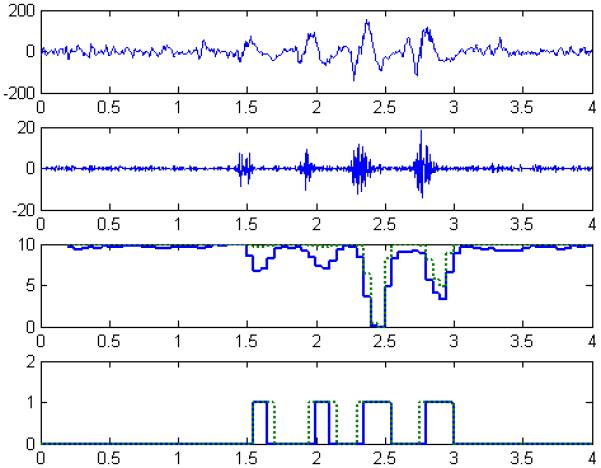Figure 4.

We illustrated the process and a representative outcome for detecting slow ripples with a four-second segment of processed iEEG from Patient C as an example. The raw iEEG (first panel) was filtered (61-100 Hz) to highlight slow ripples amongst background (second panel) before extracting each a GE-feature and a GP-feature and forming two feature-series (third panel). Each feature-series was classified using a nearest-neighbor classifier, resulting in a binary sequence (fourth panel) to discriminate epileptic events (1) and non-epileptic events (0). For this case, we noticed that the feature-series somewhat overlapped and paralleled in end-behavior but the binary sequences experienced some subtle differences (e.g., time-stamp(s) and duration of detected events).
